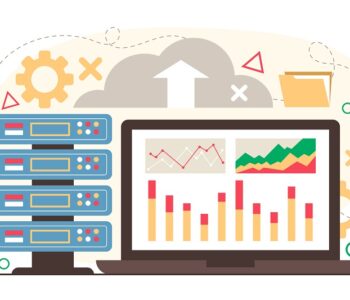 Healthcare
Healthcare Unleashing Seamless Integration: Conquering the Top 15 Frustrations in…
In the complex and rapidly evolving landscape of healthcare, the integration of IT systems remains a formidable challenge for leadership and management. In this blog post, we will explore the top 15 reasons for frustrations surrounding healthcare IT integration and shed light on how innovative software tools can pave the way for a more connected and efficient healthcare ecosystem.
1. Legacy Systems Incompatibility
- Frustration Level: 9/10
Aging legacy systems often resist seamless integration with modern technologies, hindering the overall interoperability of healthcare IT.
Solution: Offer system modernization services that ensure compatibility between legacy and new systems, enabling a smooth transition to advanced healthcare IT infrastructure.
2. Diverse Data Formats and Standards
- Frustration Level: 8/10
Varied data formats and standards across different healthcare systems create interoperability challenges, complicating data exchange.
Solution: Develop integration platforms that support diverse data formats and adhere to standardized interoperability frameworks, facilitating smooth communication between systems.
3. High Implementation Costs
- Frustration Level: 9/10
The substantial costs associated with implementing and maintaining integrated IT solutions can strain healthcare budgets.
Solution: Provide cost-effective integration solutions that offer scalability and modular implementation, minimizing upfront costs and ensuring long-term affordability.
4. Lack of Interoperability Standards
- Frustration Level: 8/10
The absence of universally accepted interoperability standards makes it challenging to achieve seamless communication between disparate healthcare IT systems.
Solution: Advocate for and implement standardized protocols, and design software tools that adhere to these standards, promoting a more interoperable healthcare environment.
5. Data Security Concerns
- Frustration Level: 7/10
Integrating healthcare IT systems raises concerns about data security, particularly when dealing with sensitive patient information.
Solution: Implement robust security measures in integration tools, including encryption, access controls, and audit trails, ensuring the confidentiality and integrity of patient data.
6. Resistance to Change
- Frustration Level: 8/10
Resistance from stakeholders, including staff and leadership, poses a significant hurdle in the adoption of new integrated IT solutions.
Solution: Offer comprehensive change management strategies alongside user-friendly integration tools, promoting a culture of acceptance and collaboration.
7. Vendor Lock-In
- Frustration Level: 8/10
Dependence on a single vendor for integrated solutions can lead to vendor lock-in, limiting flexibility and scalability.
Solution: Develop middleware solutions that allow for flexibility in choosing vendors and systems, preventing the drawbacks associated with vendor lock-in.
8. Inadequate Training and Support
- Frustration Level: 7/10
Insufficient training and support for healthcare staff in using integrated IT systems contribute to inefficiencies and user frustrations.
Solution: Provide comprehensive training programs and user support services, ensuring that healthcare professionals are well-equipped to navigate and utilize integrated IT tools effectively.
9. Data Migration Challenges
- Frustration Level: 9/10
The complexity of migrating data from legacy systems to new integrated platforms poses a significant challenge, leading to potential data loss or errors.
Solution: Develop data migration tools that streamline the transfer of data, ensuring accuracy and minimizing disruptions during the integration process.
10. Scalability Issues
– Frustration Level: 8/10
Integrated solutions may struggle to scale efficiently, especially in the face of growing healthcare organizations and evolving technology requirements.
Solution: Design integration tools with scalability in mind, allowing for the seamless expansion of integrated systems as healthcare organizations grow.
11. Fragmented Patient Records:
– Frustration Level: 7/10
Fragmented patient records resulting from poor integration hinder a comprehensive view of patient health, impacting the quality of care.
Solution: Implement patient-centric integrated platforms that consolidate and centralize patient data, providing a holistic view for healthcare providers.
12. Limited Connectivity with External Systems
– Frustration Level: 8/10
Inability to connect with external systems, such as pharmacies or labs, creates gaps in the continuity of care.
Solution: Develop interfaces and integration tools that establish seamless connections with external systems, promoting a more collaborative healthcare network.
13. Regulatory Compliance Challenges:
– Frustration Level: 9/10
Meeting regulatory requirements, such as those outlined by HIPAA, becomes complex when integrating diverse IT systems.
Solution: Design integration solutions with built-in compliance features, automating adherence to regulatory standards and streamlining compliance reporting.
14. Data Duplication and Inconsistencies:
– Frustration Level: 8/10
Integration challenges often result in data duplication and inconsistencies, leading to inaccuracies in patient records and operational inefficiencies.
Solution: Implement data governance policies and integration tools that eliminate duplicates and maintain data consistency across integrated systems.
15. Inadequate System Monitoring and Maintenance
– Frustration Level: 7/10
Poor monitoring and maintenance practices can lead to system failures and disruptions in integrated healthcare IT environments.
Solution: Develop monitoring and maintenance tools that provide real-time insights into system health, allowing proactive measures to prevent downtime and errors.
In conclusion, addressing healthcare IT integration challenges requires a strategic approach and innovative software solutions. By leveraging these tools, healthcare organizations can achieve a seamlessly connected ecosystem that enhances collaboration, efficiency, and, most importantly, patient care.
#HealthcareIT #Interoperability #HealthTech #IntegrationSolutions #SoftwareSolutions























